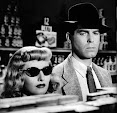I meant to write about this last night but got stuck with other things.
Russia has built itself a new cathedral for its armed forces, and I've got to admit, on first impression, I really quite like it. It's a spectacular building of relatively traditional design which is very impressive. I think the use of glass and color in the building is particularly imaginative and overall produces a grand ecclesiastical space with a sense of grandeur and sanctity that is completely lacking in most modern religious architecture. I've never really liked byzantine art but I've really warmed to this.

I'm not a big fan however, of how they have sited the building, placing a military "theme' park/museum next to it. I feel it detracts from the gravity of the space and it detracts from the sanctity and seriousness which the building itself so successfully evokes. The building has had it's critics, complaining about its color, which I like: it's glorification of the military, which I also think is appropriate in the right context, and some of the stylistic choices which I think are petty.
In the previous post, Commetator Joseph A said:
I'd think the most controversial iconography in the military temple is
the resurrection icon in the apse. I admit its rad coolness, but it
strikes me as pretty innovative, as far as temple iconography goes. Not
as wild as Jesus as Thor in D.C.'s National (R.C.) Basilica, but pretty
wild for the Orthodox.
I personally think it is fantastic and great example of how a modern stylistic element can be incorporated into a traditional style in a way that adds to the intended effect. It's modern but synches with the old. When I first saw it, I was gobsmacked.
Till I started noticing a few details.
Like the hammer and sickle on the ceiling, the abundance of unabashedly Soviet military officers and commemorations of the suppression of the Hungarian Revolution and the Prague Spring. Original proposals even included the image of Stalin, cast in a
positive light. (Removed after protest from the Orthodox community.) Hmmm, I thought to myself, something's not right.
The purpose of any religious decoration is to convey the religious theology in some kind of visual form. So the presence and
positive context of Soviet imagery in an Orthodox Church was either a mistake or some attempt to "synthesise" the two. Theologically, the synthesis is impossible since the ideals of Communism and the Ideals of mainstream Orthodox theology are oppositional. The only way such a synthesis can be achieved is by elevating the Russian commonality between the two extremes. In such a schema the only way that communism and Russian Orthodoxy can be reconciled is because of their Russian-ness. God matters less than being Russian.
Stalin's image was removed after an outcry from members of the Orthodox Church.
Commentator Joseph A also said:
Many cathedrals and temples depict significant historical events. The
National Cathedral in Washington D.C. (Anglican) has depictions of the
War between the States among other important episodes in the life of the
American nation. The Russian military sobor in this article does the
same -- it is a temple for the armed forces, and there is an emphasis on
WWII.
This is true but the issue is how to depict the art while being true to the religion. I fully understand that the "Great Patriotic War" was both an exercise in the expansion of Communism and a war of liberation against the Genocidal Germans, so Russia does have something legitimate--from a Christian perspective--to celebrate about it. How to depict it is the problem, since what you don't want to do is elevated the anti-Christian in a such a depiction. I don't think the art achieves this balance, neither do quite a few orthodox.
Lest anyone think that my comments are due to my inherent anti-Russianism,
this interesting article by the Russian, Alexi Lidov, raises similar objections:
And from the perspective of social psychology it is interesting that many people are quite comfortable with this sort of understanding of Christianity, with the love of God soothingly transformed into the veneration of power.
It seems to me that the church we’re talking about aspires to become a monument of the era and a bright reflection of contemporary Russian religious consciousness[ED], as the most vivid manifestation of the deepest spiritual crisis but nowhere near a manifestation of triumph. And there is something paradoxical in this. I think this ambiguity and incongruity has been felt by many Orthodox people and this is precisely why the military church has evoked such an explosive reaction, and occasionally also deep antagonism, despite the unprecedented promotion of the project via state mass media. And it seems to me, too, that this will live on as a memorial of sorts to the era. But in my opinion, the proposed path is — undoubtedly — a ruinous dead end and should certainly not become an example for imitation.
Bonus: Lidov actually gives a very good talk here about the cathedral and various other Russian relgious topics. Worth a listen.
Fun fact that I didn't know: Stalin, after mercilessly persecuting religion in Russia only allowed it to practice again in order to get Lend Lease American military supplies. Apparently the Christians in Congress were refusing to the let the appropriate legislation pass because of Stalin's brutality towards religion. The only reason he opened the Churches in Russia was to win favour with the American Congress!
*Images are not mine and have been used under fair use provisions.















